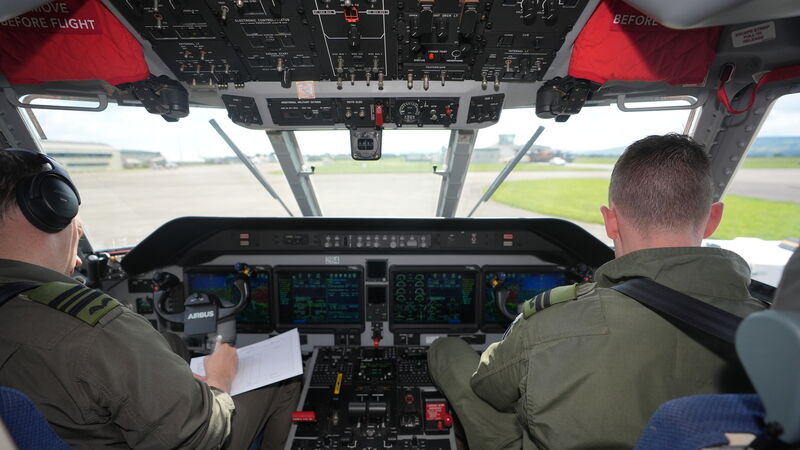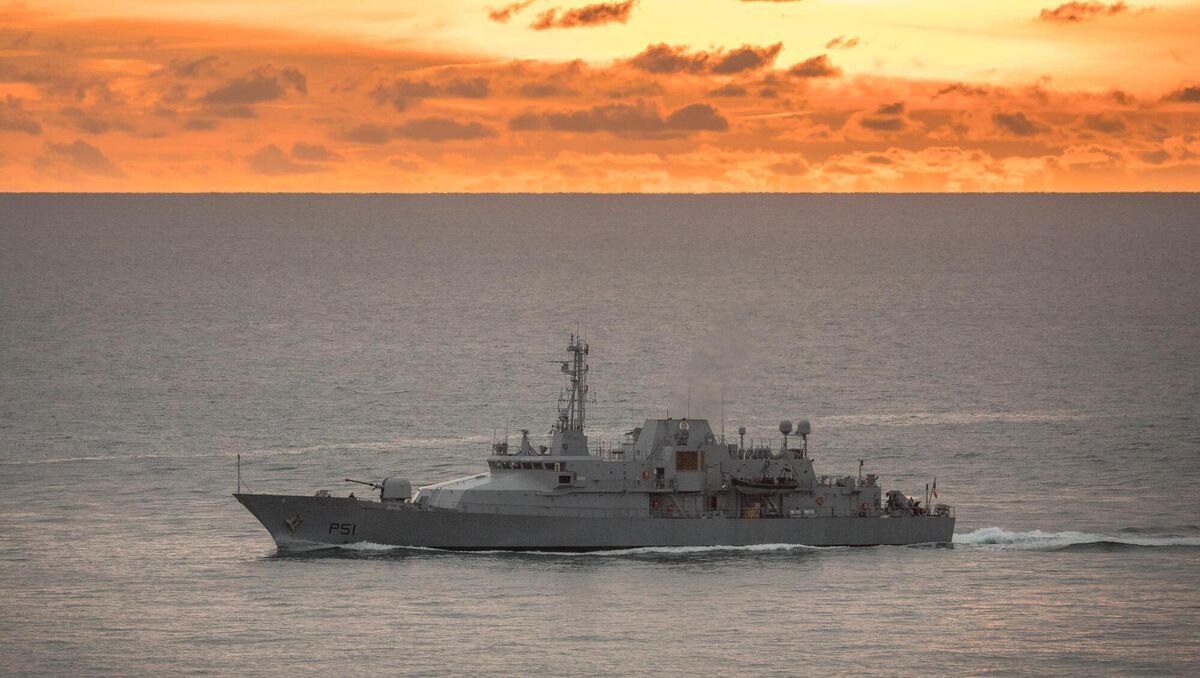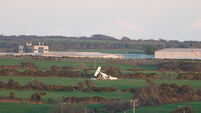Navy monitoring suspected Russian 'shadow fleet' tanker near Foynes port

The presence of the ship off the coast of Cork and Kerry was identified by an Air Corps CASA C-295 maritime patrol aircraft on Thursday afternoon. File photo
The Irish Naval Service is continuing to monitor a suspected Russian “shadow fleet” tanker that has sailed from the south-west coast, near the location of transatlantic data cables, towards Foynes port in Limerick.
The cargo vessel, Arne, was boarded by German federal police on February 26 over suspicions of sabotage.
According to European media reports, the vessel was missing an anchor, raising suspicions about whether it might have been used to damage subsea cables or energy pipelines in the Baltic Sea.
Several other vessels have been accused of dropping their anchors to damage subsea cables in the Baltic Sea over the past year, including the NewNew Polar Bear and Eagle S.
The Arne, sailing under the flag of Antigua and Barbuda, travelled from St Petersburg, Russia, on February 19, bound for Seville, Spain.
The Naval Service is examining why it sailed towards the south coast of Ireland, including over a number of subsea data cables, and is currently monitoring its presence near Foynes port.
According to international maritime trackers, the vessel is at anchor along the Shannon Estuary.
The presence of the ship off the coast of Cork and Kerry, first reported by , was identified by an Air Corps CASA C-295 maritime surveillance aircraft on Thursday afternoon.
Naval Operations Command at Haulbowline monitors all vessels within the Exclusive Economic Zone (EEZ), which spans 200 nautical miles from Ireland’s south and west coasts.
They use AIS (which acts like a transponder), along with other tracking technologies provided by the European Maritime Safety Agency (EMSA) and the Irish Coast Guard AIS.
The Naval Service and Air Corps benefit from the sharing of information with sister agencies in neighbouring countries, such as France and Britain.
A report last month in The Maritime Executive said the Arne was an “ageing freighter”, in operation for some 27 years.
It said the ship passed Gotland, Sweden, on the evening of February 20-21, and reduced speed as she transited past the southeastern side of the island.

Swedish authorities announced a new suspected "disturbance" to a subsea cable, which links Germany and Finland under the Baltic.
The ship’s “speed fluctuations and course” attracted the attention of the NATO monitoring mission in the Baltic.
The German Federal Marine Police dispatched the patrol vessels Bamberg and Neustadt to monitor and escort Arne to Kiel Bay. Denmark's cutter HDMS Luna joined the convoy as well.
There are estimates of Russia using around 70 vessels in a “dark” or “shadow” fleet of older ships, their ownership obscured, to transport oil affected by European and international sanctions, from Russia.
The ships, in addition to potentially posing threats to undersea cables and pipelines, are also of concern to authorities as they can pose a threat to other ships, the environment, and marine life.
In a statement the Defence Forces’ Press Office said: “We do not comment specifically on operationally sensitive missions including maritime surveillance operations.
“The Irish Defence Forces maintain continuous maritime surveillance within Ireland's Exclusive Economic Zone (EEZ) and assigned Area of Operations through coordinated efforts of the Naval Service and Air Corps.
“This comprehensive monitoring ensures the security of Irish waters and adherence to international maritime laws. Under the United Nations Convention on the Law of the Sea (UNCLOS), all vessels, including those of military nature, are permitted to transit through coastal states' territorial waters under the principle of innocent passage as outlined in Article 19. Vessels transiting Irish waters are expected to comply with international law and may be subject to observation by Defence Forces assets to verify such compliance.
It added: “The Irish Naval Service Naval Operations Centre, in coordination with the Air Corps and Defence Forces Headquarters, conduct 24/7 monitoring of vessels within the Irish EEZ. This surveillance allows for timely detection and response to any potential maritime situations.
"Additionally, the Naval Service Fisheries Monitoring Centre oversees fishing vessel activities of all nationalities within the EEZ. The Defence Forces remain dedicated to protecting Ireland's maritime interests and ensuring the security of our waters and infrastructure through vigilant and ongoing surveillance operations. Any specific vessel movements or interactions are assessed within this broader context of routine maritime monitoring and international law compliance.”





